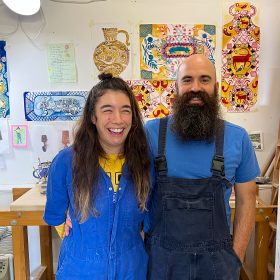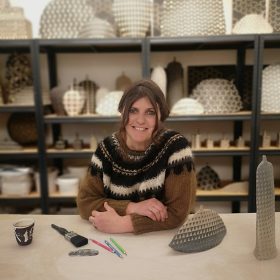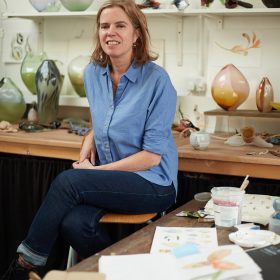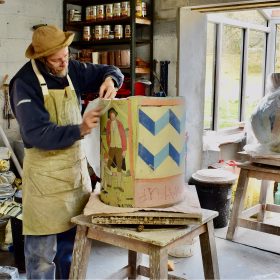A Natural Selection presents six exceptional makers, each working in a unique material, yet all expressing a kinship with the natural world.
Anthony Bryant from Cornwall, is a master of green woodturning who creates astonishingly delicate, thin-walled vessels from freshly cut timber. From Devon, Vicky Lindo and Bill Brookes share a collaborative ceramics studio and draw their narratives from mythology, folklore, and everyday life to shape richly story-laden forms. Iceland-born ceramicist Björk Haraldsdóttir, now based in Dorset, creates handbuilt stoneware vessels that feature strong geometric and monochrome patterns, deeply rooted in her architectural background and the dramatic Icelandic landscape. Michèle Oberdieck, originally from Canada and now based in London, crafts blown-glass vessels whose fluid, biomorphic shapes and vibrant coloration evoke botanical movement and light. Based in Wales, Philip Eglin’s post-modern aesthetic draws on many sources from popular culture and ceramic history through to high art, and from Gothic Madonnas to Abstract Expressionist painters of the 1950s. He works in both the figurative and the abstract, using his forms as a canvas or vehicle for whatever narrative he is exploring.







